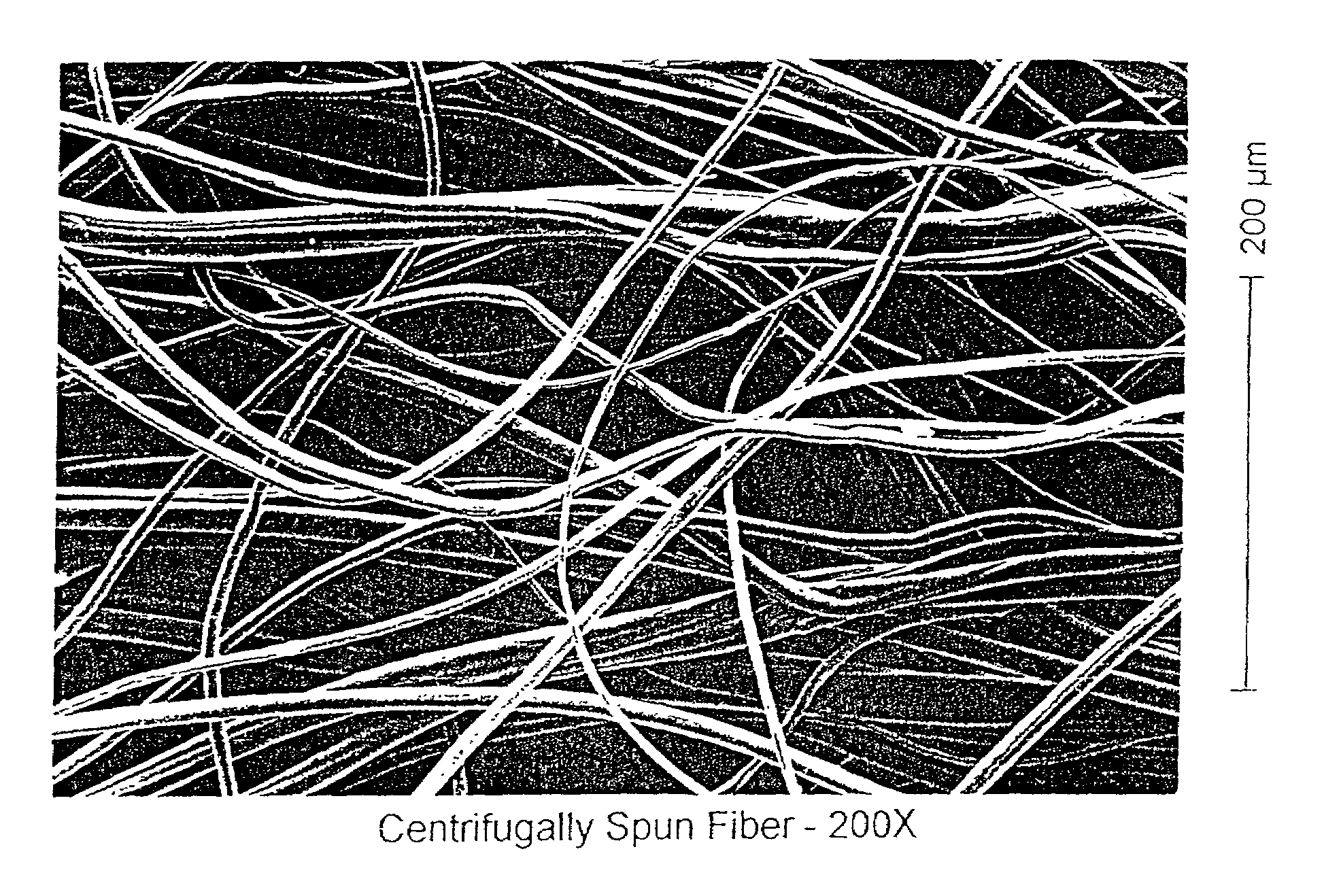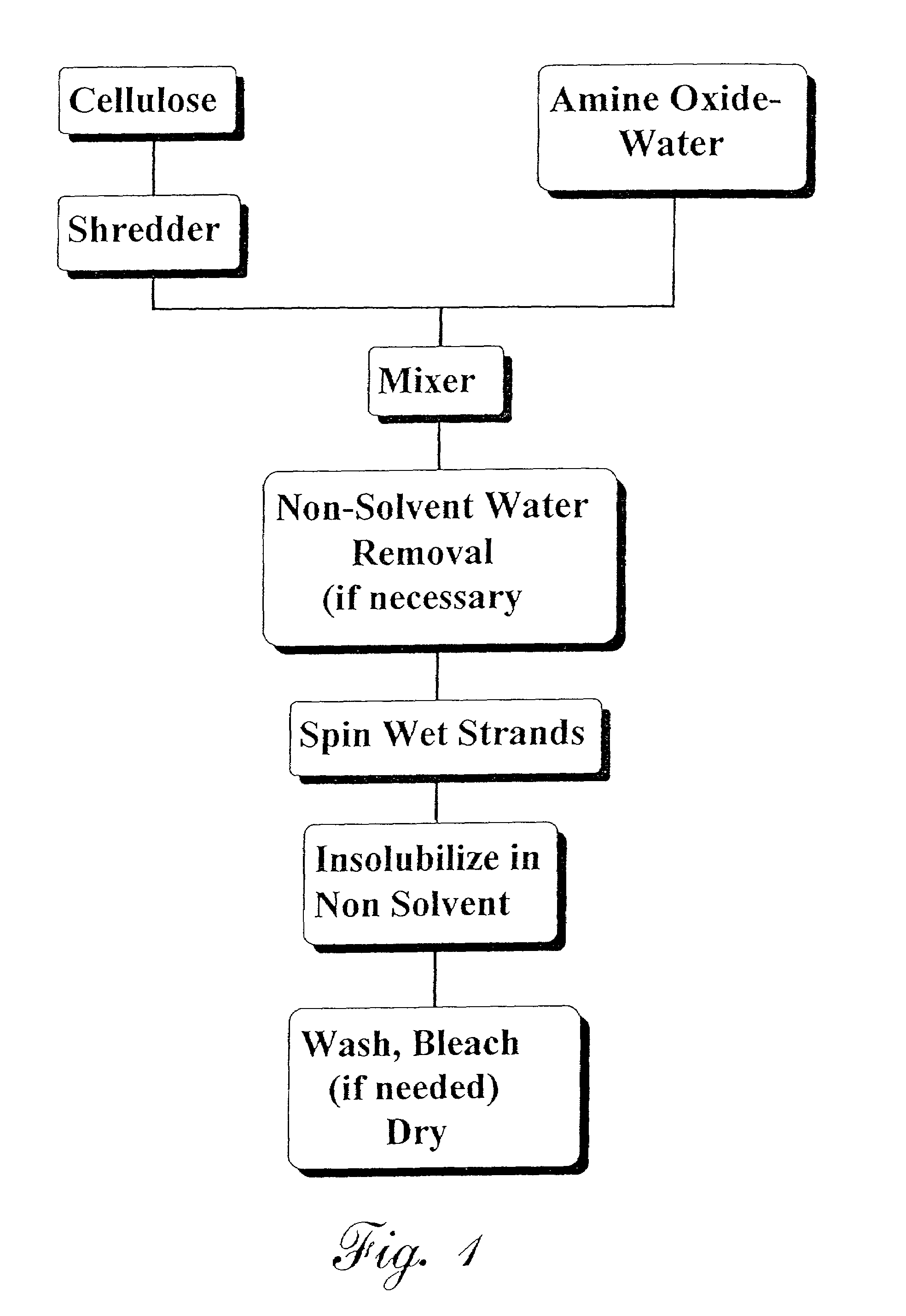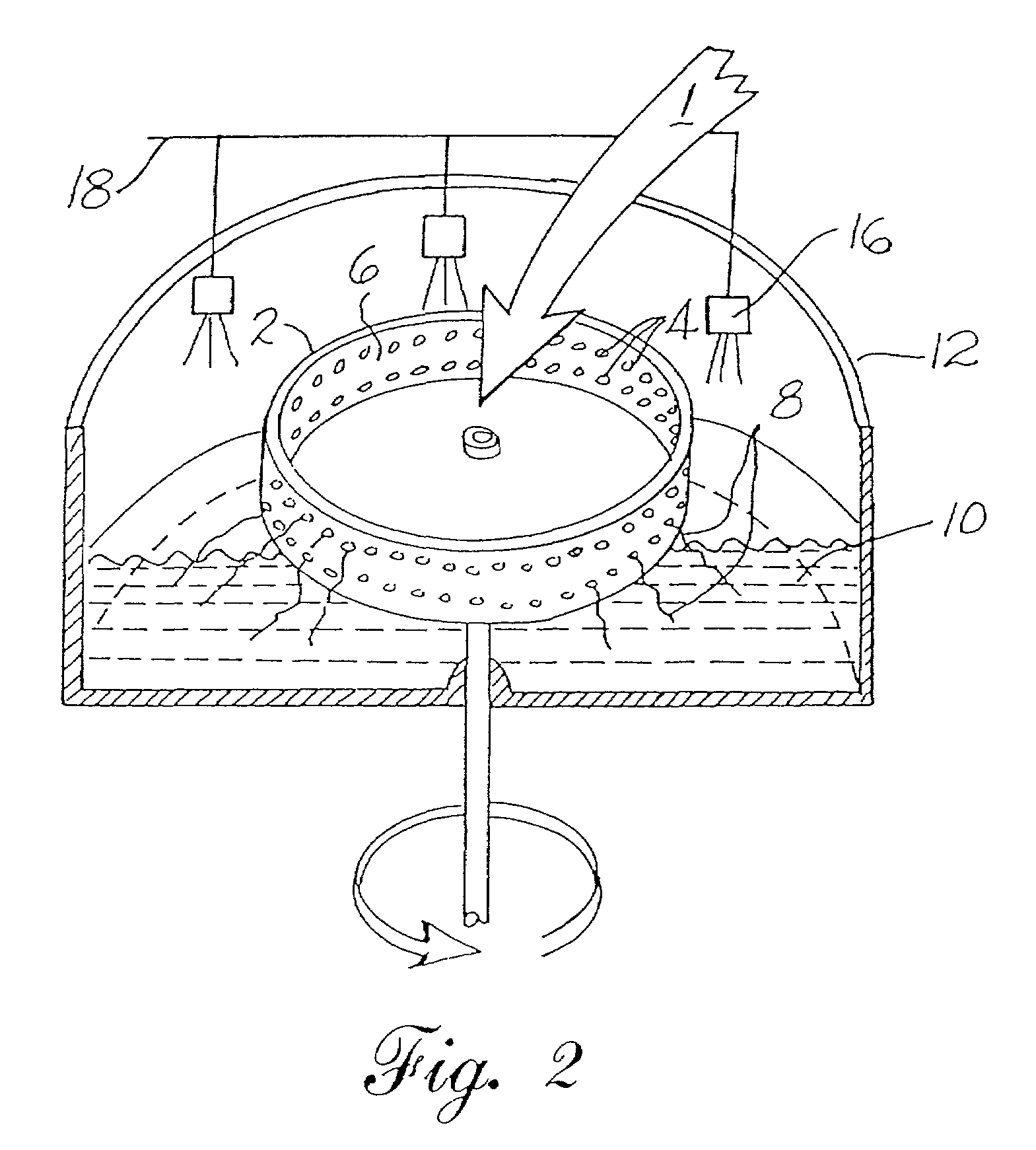Lyocell nonwoven fabric
- Summary
- Abstract
- Description
- Claims
- Application Information
AI Technical Summary
Benefits of technology
Problems solved by technology
Method used
Image
Examples
example 1
Cellulose Dope Preparation
[0063]The cellulose pulp used in this and the following examples was a standard bleached kraft southern softwood market pulp, Grade NB 416, available from Weyerhaeuser Company, New Bern, North Carolina. It has an alpha cellulose content of about 88–89% and a D.P. of about 1200. Prior to use, the sheeted wood pulp was run through a fluffer to break it down into essentially individual fibers and small fiber clumps. Into a 250 mL three necked glass flask was charged 5.3 g of fluffed cellulose, 66.2 g of 97% NMMO, 24.5 g of 50% NMMO, and 0.05 g propyl gallate. The flask was immersed in an oil bath at 120° C., a stirrer inserted, and stirring continued for about 0.5 hr. A readily flowable dope resulted that was directly suitable for spinning.
example 2
Fiber Preparation by Centrifugal Spinning
[0064]The spinning device used was a modified “cotton candy” type, similar to that shown in U.S. Pat. No. 5,447,423 to Fuisz et al. The rotor, preheated to 120° C. was 89 mm in diameter and revolved at 2800 rpm. The number of orifices could be varied between 1 and 84 by blocking off orifices. Eight orifices 700 μm in diameter were used for the following trial. Cellulose dope, also at 120° C., was poured onto the center of the spinning rotor. The thin strands of dope that emerged were allowed to fall by gravity into room temperature water contained in the basin surrounding the rotor. Here they were regenerated. While occasional fibers would bond to each other most remained individualized and were several centimeters in length.
[0065]In addition to the process just described, very similar microdenier fibers were also successfully made from bleached and unbleached kraft pulps, sulfite pulp, microcrystalline cellulose, and blends of cellulose with...
example 3
Fiber Preparation by Melting Blowing
[0067]The dope as prepared in Example 1 was maintained at 120° C. and fed to an apparatus originally developed for forming melt blown synthetic polymers. Overall orifice length was about 50 mm with a diameter of 635 μm which tapered to 400 μm at the discharge end. After a transit distance in air of about 20 cm in the turbulent air blast the fibers dropped into a water bath where they were regenerated. Regenerated fiber length varied. Some short fibers were formed but most were several centimeters to tens of centimeters in length. Variation of extrusion parameters enabled continuous fibers to be formed. Quite surprisingly, the cross section of many of the fibers was not uniform along the fiber length. This feature is expected to be especially advantageous in spinning tight yarns using the microdenier material of the invention since the fibers more closely resemble natural fibers in overall morphology.
[0068]In a variation of the above process, the f...
PUM
| Property | Measurement | Unit |
|---|---|---|
| Length | aaaaa | aaaaa |
| Diameter | aaaaa | aaaaa |
Abstract
Description
Claims
Application Information
 Login to View More
Login to View More - R&D
- Intellectual Property
- Life Sciences
- Materials
- Tech Scout
- Unparalleled Data Quality
- Higher Quality Content
- 60% Fewer Hallucinations
Browse by: Latest US Patents, China's latest patents, Technical Efficacy Thesaurus, Application Domain, Technology Topic, Popular Technical Reports.
© 2025 PatSnap. All rights reserved.Legal|Privacy policy|Modern Slavery Act Transparency Statement|Sitemap|About US| Contact US: help@patsnap.com



